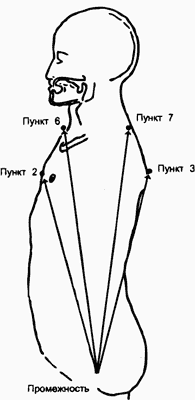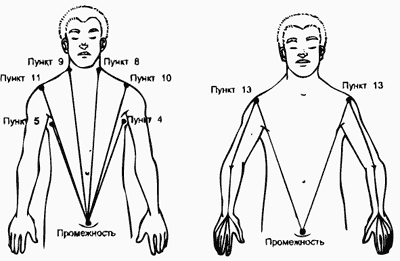Only now is the time to explain that the technique of breathing with the bones of the hands has become the threshold of a new, advanced stage in the comprehension of Taoist practice.
Up to a certain point, this week's techniques will be similar to those previously learned. When you send energy into your hands, instead of inhaling, hold your breath and, with an effort of will, direct the energy through your hands into your fingers. In part 3 of “spinal (bone) marrow breathing” (tenth week) I already talked about this technique, but did not touch on the details.
For Taoists, this form of breathing is the highest. As a rule, it is referred to as prenatal or embryonic respiration. The name itself speaks of the circulation of fetal energy in the mother’s womb. While the fetus is surrounded by amniotic fluid, it cannot breathe air. However, this does not affect the free circulation of energy in the body. After birth, most of us gradually lose this ability. Restoring the free circulation of energy within the body is one of the goals of the upcoming workout.
Sometimes during classes, some students begin to feel that once upon a time they already mastered this technique. Vague memories emerge, foggy images and associations arise. The reason for such phenomena lies in “body memory”. We were all capable when we were in the womb. For many young children, energy circulates freely along the vital meridians of the body. With age, children lose this ability and forget about the sensations associated with it. Basically, these sensations relate to the emotional plane, since in early infancy the speech factor is practically absent. Therefore, memories of lost inner harmony lie in the emotional sphere. With practice, the restored energy circulation can be made meaningful. And “melting the five elements” will help you with this.
This week we will begin the exercise with the quadruple breathing in the heart center (T-11) and in the armpits, which we studied during the tenth week. Next we will repeat the exercise from last week, that is, breathing from the front, back and sides of the neck. Then you will inhale and direct the “perineal force” to the upper left shoulder area and after another breath of air, direct it to the upper right shoulder. After this, you should hold your breath and, with an effort of will, direct the energy into your hands and fingers.


- 1. Inhale slowly using abdominal breathing.
- 2. Take a shallow breath and direct the “perineal force” to the center of the sternum.
- 3. Take a shallow breath and direct the “perineal force” to the jia-pe point, located on the back opposite the heart point.
- 4. Take a shallow breath and apply “perineal force” to your left armpit.
- 5. Take a shallow breath and direct the “perineal force” into your right armpit.
- 6. Take a shallow breath and apply the “perineal force” to the V-shaped notch in your throat.
- 7. Take a shallow breath and direct the “perineal force” to the large vertebra at the base of the neck (C-7).
- 8. Take a shallow breath and apply “perineal force” to the base of your neck on the left side.
- 9. Take a shallow breath and apply “perineal force” to the base of your neck on the right side.
- 10. Take a shallow breath and direct the “perineal force” to the top of your left shoulder.
- 11. Take a shallow breath and direct the “perineal force” to the top of your right shoulder.
- 12. Round your shoulders as if you were holding chicken eggs under your arms.
- 13. Hold your breath, hold the “perineal force”, and then with a mental effort direct the energy into your hands to your fingers.
- 14. Mentally return the energy up your arms to your shoulders.
- 15. As you exhale, maintain the position of your shoulders and then relax.
- 16. Start the exercise with one or two repetitions; increase their number according to your capabilities.
At first, it will not be easy for you to control the movement of energy flows with one strong-willed effort. With practice, the feeling of emptiness after doing the exercise will pass. You will be able to move the energy up and down several times during one inhalation.



